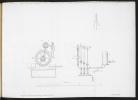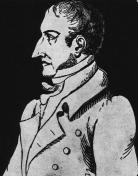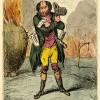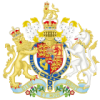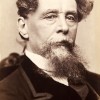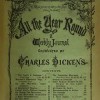Victorian Literature and Material Culture Timeline
Created by Ashley Nadeau on Sat, 08/17/2019 - 17:28
Part of Group:
This timeline will include historic events related to our course texts and the objects each class member has chosen for their material culture research project.
Timeline
Chronological table
| Date | Event | Created by | Associated Places | |
|---|---|---|---|---|
| circa. 1758 |
First Threshing MachineThe first threshing maching dates back to 1758 |
Chancellor Carter | ||
| 16 Oct 1811 |
National Society for the Education of Poor Children foundedOn 16 October 1811, the National Society for the Education of Poor Children in the Principles of the Established Church (the Church of England) was founded to establish “National Schools.” According to their founders, poor children were to be taught to avoid vice and behave in an orderly manner within their station. To limit costs, the monitorial system was employed, by which more advanced pupils taught younger ones. Related ArticlesFlorence S. Boos, “The Education Act of 1870: Before and After” |
Dave Rettenmaier | ||
| 7 Feb 1812 |
Charles Dickens is bornCharles Dickens is born in Portsmouth. |
Carmen Thorley | ||
| circa. 1818 |
William Cubitt invents the Tread MillWilliam Cubitt, who was from a family of millwrights in Norfolf, invented the treadmill in 1818 as tool for grinding corn via human labour. The idea quickly caught on that the device might be used by inmates performing "hard labor," and thus render them useful to society. Brixton Prison in London was one of the first to use the deviced in such a manner. |
Ashley Nadeau | ||
| 25 Apr 1827 to 30 Jun 1830 |
Issac Solomon Escapes Newgate PrisonIsaac "Ikey" Solomon, the real life inspiration for Fagin, was held at Newgate Prison for a few months before his father-in-law arranged for a prison break by replacing the driver of a carriage meant to transport Solomon to court on right of Habeas Corpus (Ikey claiming his imprisonment was unlawful) then driving the carriage down a side street where Solomon’s friends were waiting to assault the carriage. They succeeded and Solomon fled to the United States. Only to later head to Australia and later be shipped back to England for trial several years later. |
Aaron Cope | ||
| circa. The start of the month Autumn 1830 to circa. Winter 1831 |
Swing RiotsSwing Riots of 1830 in which agricultural workers in Elham Valley, near Kent, destroyed threshing machines, burned ricks, smashed barns and workhouses, and maimed cattle—in short, attacked the visible signs of the new capitalist relations being imposed on agrarian production and rural life, more broadly. |
Chancellor Carter | ||
| Aug 1830 to Dec 1830 |
Swing Riots
Related ArticlesCarolyn Lesjak, "1750 to the Present: Acts of Enclosure and Their Afterlife" (forthcoming) |
Dave Rettenmaier | ||
| Jul 1832 |
Anatomy Act
Related Articles |
Dave Rettenmaier | ||
| Apr 1836 to Nov 1837 |
Pickwick PapersFrom April 1836 to November 1837, Charles Dickens’s The Posthumous Papers of the Pickwick Club is published in twenty monthly numbers, catalyzing the market for monthly serials. Articles |
Dave Rettenmaier | ||
| Feb 1837 to Apr 1839 |
Oliver Twist
Related ArticlesHeidi Kaufman, “1800-1900: Inside and Outside the Nineteenth-Century East End” |
Dave Rettenmaier | ||
| 30 Apr 1859 |
All the Year Round founded
All the Year Round was the first magazine with Dickens as proprietor-editor, and home to first important sensation novel, Woman in White. Articles |
Dave Rettenmaier |

